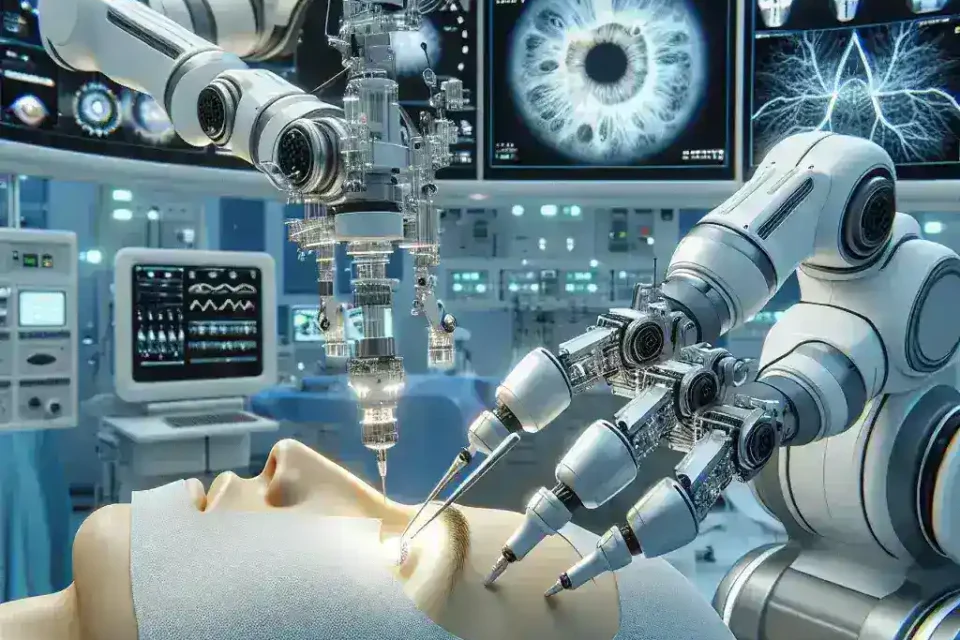AI Powered Robotic Assistants Performing Eye Surgeries with Micro Precision

The Evolution of Eye Surgery
Eye surgery has come a long way since its inception. From the earliest attempts to remove cataracts in ancient civilizations to modern-day advanced techniques, the field has constantly evolved. The introduction of lasers in the 1980s marked a significant milestone, but the latest development is the integration of artificial intelligence (AI) and robotics — a combination that is reshaping how eye surgeries are performed.
Understanding AI Powered Robotic Assistants
AI powered robotic assistants refer to surgical robots that are enhanced by artificial intelligence technologies. These machines are designed to assist surgeons by performing specific tasks with unparalleled precision and control. In eye surgeries, where even the slightest error can lead to complications, the need for accuracy is paramount.
The Technology Behind AI Robotics
At the core of AI robotic systems are advanced algorithms that analyze vast amounts of data in real-time. These systems utilize machine learning to improve their performance over time, learning from previous surgeries to enhance future outcomes. Some key technologies involved include:
- Computer Vision: This allows robots to interpret visual information, enabling them to identify critical structures within the eye.
- Precision Mechanics: Robotic arms designed to perform micro-surgical tasks with extreme accuracy.
- Haptic Feedback: This technology provides tactile feedback to surgeons, allowing them to feel the resistance and texture during surgery.
Benefits of AI Robotic Assistants in Eye Surgery
Micro Precision
One of the most significant advantages of robotic assistants is their ability to perform surgeries with micro precision. For instance, during cataract surgeries, these robots can make incisions as small as 1.5mm, reducing recovery time and minimizing pain for patients.
Enhanced Surgical Outcomes
Studies indicate that surgeries assisted by AI robots lead to higher success rates. A recent study published in a medical journal revealed that AI-assisted surgeries had a 92% success rate compared to 85% for traditional methods. This improvement is attributed to better accuracy and reduced human error.
Shorter Recovery Times
Patients undergoing surgeries with robotic assistance typically experience shorter recovery times. A study showed that patients who had robotic cataract surgery returned to their daily activities 30% faster than those who had traditional procedures.
Challenges and Considerations
High Initial Costs
Despite the numerous benefits, the high cost of robotic systems can be a barrier to widespread adoption. The initial investment in technology and training for surgical teams can be significant, potentially restricting access to these advanced tools in certain regions.
Training and Expertise
Surgeons must undergo specialized training to operate these robotic systems effectively. The learning curve can be steep, and not all surgeons may feel comfortable with the technology initially.
Data Security Concerns
As with any technology that relies on data, there are concerns regarding patient privacy and data security. Ensuring that patient information is kept secure while utilizing AI and robotic solutions is crucial.
Future Predictions
The future of AI powered robotic assistants in eye surgery looks promising. Experts predict that advancements in AI will lead to even more sophisticated systems capable of performing complex procedures autonomously. The integration of augmented reality may also enhance visualization during surgery, allowing surgeons to see more than what traditional methods provide.
The Role of Telemedicine
As telemedicine continues to grow, the potential for remote eye surgeries performed by AI robots in different locations could revolutionize access to care. This could be especially beneficial in underserved areas where specialists may not be readily available.
Real-World Examples
Several hospitals and clinics worldwide have begun implementing AI assisted robotic eye surgeries with great success. For instance, the Ophthalmic Institute of Chicago recently reported that they had performed over 1,000 surgeries using AI robotic assistance, with patient satisfaction ratings exceeding 95%.
Conclusion
AI powered robotic assistants are transforming the landscape of eye surgery, offering unprecedented precision and improved outcomes. While challenges remain in terms of cost and training, the continued evolution of this technology promises to enhance patient care significantly. As we look to the future, the combination of AI and robotics will likely play a crucial role in shaping the next generation of surgical practices.
